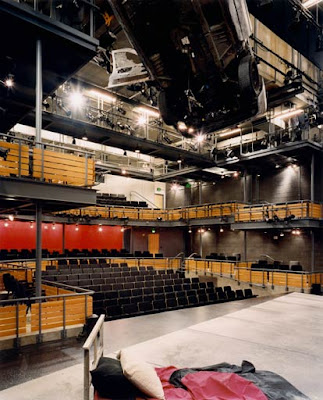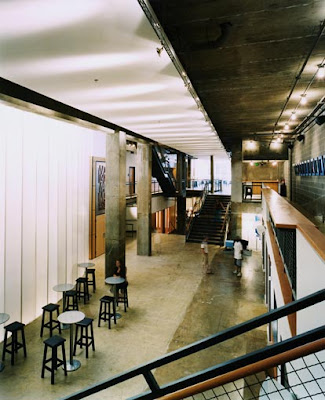By Beth Herman Back in the ‘70s, comedian Steve Allen, already somewhat enshrined for his deft hosting of “The Tonight Show,” won an Emmy, a Peabody, an Encyclopedia Britannica Award and a few others for his cutting edge “Meeting of Minds,” what critics called “the ultimate talk show.” The format for PBS’ “Meeting of Minds,” which Allen created, produced and hosted, was both ingenious and simple: Take a group of history’s seminal characters from different time periods, and with significantly different values and perspectives (Cleopatra, George Patton, Socrates, Machiavelli and Thomas Jefferson, to name a few), put them in a room together to solve a particular problem, and let ‘em rip. Anachronism would never be the same.
the ‘70s, comedian Steve Allen, already somewhat enshrined for his deft hosting of “The Tonight Show,” won an Emmy, a Peabody, an Encyclopedia Britannica Award and a few others for his cutting edge “Meeting of Minds,” what critics called “the ultimate talk show.” The format for PBS’ “Meeting of Minds,” which Allen created, produced and hosted, was both ingenious and simple: Take a group of history’s seminal characters from different time periods, and with significantly different values and perspectives (Cleopatra, George Patton, Socrates, Machiavelli and Thomas Jefferson, to name a few), put them in a room together to solve a particular problem, and let ‘em rip. Anachronism would never be the same.
On N Street in Georgetown, a three-story row house built in 1960 sits, perhaps anachronistically, among its more genteel and embellished 19th century brethren. Without vocal chords, and though the interior emulates its more historical neighbors with flourishes such as a curved stair, niches and heavy molding, the home’s real voice is manifested in a closer relationship to its mid-20th century roots: in other words, somewhat undistinguished.
I Can Dream, Can’t I?
For Douglas Rixey of Rixey-Rixey Architects, a progressive young homeowner and his fiancee’s desire to renovate the interior and also add a floor, thereby breaking through the proverbial Georgetown (glass) ceiling which mandates structures like this generally cannot build up, became a task of monumental proportion mired in research, hearings, personalities, reviews, variances and still more variances, not to mention adroitness with a magic wand and maybe some advanced spell-casting. In addition to navigating a sea of the usual bureaucratic boards and suspects, building up, where the property was concerned, would require feats of Georgetown geometry and construction contortion: The house is ringed by neighbors and their gardens, with no access to a backyard or public alley for scaffolding.
“The client had purchased the home from his parents a couple of years ago and was living there as a bachelor,” Rixey said. “He became engaged, married this month, and they are going to want to start a family and expand the house.” In short, the couple wanted to include a master bedroom suite as a top floor, or fourth story, to the house.
At a total of 4,500 s.f., 1,500 s.f. per floor, and at 58.7 percent lot coverage, the building was already very close to its allowable lot coverage, Rixey explained. In Georgetown, in the client’s zone, acceptable lot coverage is only 60 percent, so to try and build out with a master suite – with only 1.3 percent lot coverage remaining – would mean only a 44 s.f. addition, not exactly the type of master suite experience his client had in mind.
 According to Rixey, who, along with wife and partner Victoria, has been plying his craft in Georgetown for 25 years, and rules and review boards withstanding, it’s extremely rare in the area to have a house in the first place that is able to receive another floor. “Most of the historic houses will have a fairly decorative top floor, maybe with turrets, decorative cornice or some sort of architectural embellishment that basically makes it so you can’t add on to the top without severely affecting the character,” he explained. The home in question was somewhat nondescript, “…sort of Colonial Revival,” Rixey said, “but with a very plain top and nothing extraordinary about the house.”
According to Rixey, who, along with wife and partner Victoria, has been plying his craft in Georgetown for 25 years, and rules and review boards withstanding, it’s extremely rare in the area to have a house in the first place that is able to receive another floor. “Most of the historic houses will have a fairly decorative top floor, maybe with turrets, decorative cornice or some sort of architectural embellishment that basically makes it so you can’t add on to the top without severely affecting the character,” he explained. The home in question was somewhat nondescript, “…sort of Colonial Revival,” Rixey said, “but with a very plain top and nothing extraordinary about the house.”
Mr. Rixey Goes to Georgetown
Still, the process to acquire permission to build up was daunting. In most of Georgetown, a three-story or 40-foot limit defines residential architecture. Because the house on N Street was mid-20th century, however, and though it had three floors, the floor-to-ceiling height on each floor was at 8 and 9 feet, typical of more modern-day construction, Rixey said, where its towering Victorian neighbors’ homes clocked in at 10, 11 and 12 feet per story. In this respect, the house fell far below the mandated 40-foot limit. “We could add an extra floor and still be within Georgetown’s height limit,” Rixey said, noting they still needed a variance for zoning purposes.
Submitting first to the Old Georgetown Board (OGB) as the building is visible from a public space, the action required a simultaneous submission to the Advisory Neighborhood Committee (ANC), which reviews proposals with an eye toward community impact regarding open space, neighbor relations and the like, replete with letters of support from the neighbors. Filing for historic review – another step – was done “in concept,” because the architect wasn’t certain it would really be approved and was attempting to gauge reaction. When the Historic Preservation Review Board (HPRB) did approve the concept, another application to ANC had to be made, this time for the variance.
With the variance process several months in duration and made up of components including public notification of intent by posting signs, photographing signs, notarizing an affidavit that signs were posted in a specific time frame and providing names and addresses of all neighbors within a 200-foot radius, a September hearing was scheduled. “The issue,” Rixey maintained, recalling that the 90-minute hearing was more like an inquisition as these things go, “was that they needed to be convinced we couldn’t glean extra living space by excavating below grade or doing an at-grade addition.” The dearth of remaining allowable lot coverage precluded an at-grade addition, and regarding a possible basement addition, the house had been built by excavating into a hillside, Rixey explained, basically already siting three sides of the first floor below grade, except for the façade. “In any other jurisdiction, the first floor of this house would have been considered a basement because of its lack of perimeter exposure and we wouldn’t have needed variance for what would only be a two-story house,” Rixey said. “D.C. is the only jurisdiction that measures the number of stories at the front of the building.”
Capitol Risk
Among more than a dozen fourth story design alternatives presented for revie w in the process was a loggia, or balcony, on the front facing N. Street, which also faced south, providing a view out on the city from an outside terrace. With rooftop decks or terraces controversial in Georgetown, and typically not approved, Rixey’s design was no exception. (According to Rixey, however, the front balcony was actually a response to design constraints – an attempt to make the mass of the building recede somewhat and make it a little more special than simply a front façade.) The client also wanted a lot more glass, and glazing is antithetical to historic work, Rixey said. Nevertheless a modern take on a mansard roof with a dormer, though not classically detailed, was approved.
w in the process was a loggia, or balcony, on the front facing N. Street, which also faced south, providing a view out on the city from an outside terrace. With rooftop decks or terraces controversial in Georgetown, and typically not approved, Rixey’s design was no exception. (According to Rixey, however, the front balcony was actually a response to design constraints – an attempt to make the mass of the building recede somewhat and make it a little more special than simply a front façade.) The client also wanted a lot more glass, and glazing is antithetical to historic work, Rixey said. Nevertheless a modern take on a mansard roof with a dormer, though not classically detailed, was approved.
With a final historic review step remaining in the approval process contingent on permit and construction drawings, actual construction remains another conundrum (here’s where the magic wand and advanced spell-casting may again be advantageous).
“Construction (expected to begin in the spring) will be tricky,” Rixey said. The building has some rear alley access but cannot be accessed from either side due to neighbors’ properties, which include a beautiful garden on one and a narrow, private walkway on the other. Building scaffolding and staging construction equipment conventionally is out of the question. To that end, the architect is contemplating such attack modes as prefabricating the brick worksite walls in sections, off-site, and having them delivered and installed by crane. According to Rixey, prefab walls are common in commercial work but not in residential. Another strategy is to suspend scaffolding from the building and not touch the ground – to hang it off the side of the building, cantilevered out over the neighbors’ property. “It’s iffy, to say the least,” he conceded, affirming that logistics are still very much in the investigation stage.
“Five years ago, the extra floor would never have been approved,” Rixey said. “The community would be up in arms about people doing additions and taking up open space. Now times have changed; people’s attitudes have changed. I kind of expected it, but it still amazes me that this additional floor was approved.”



























































